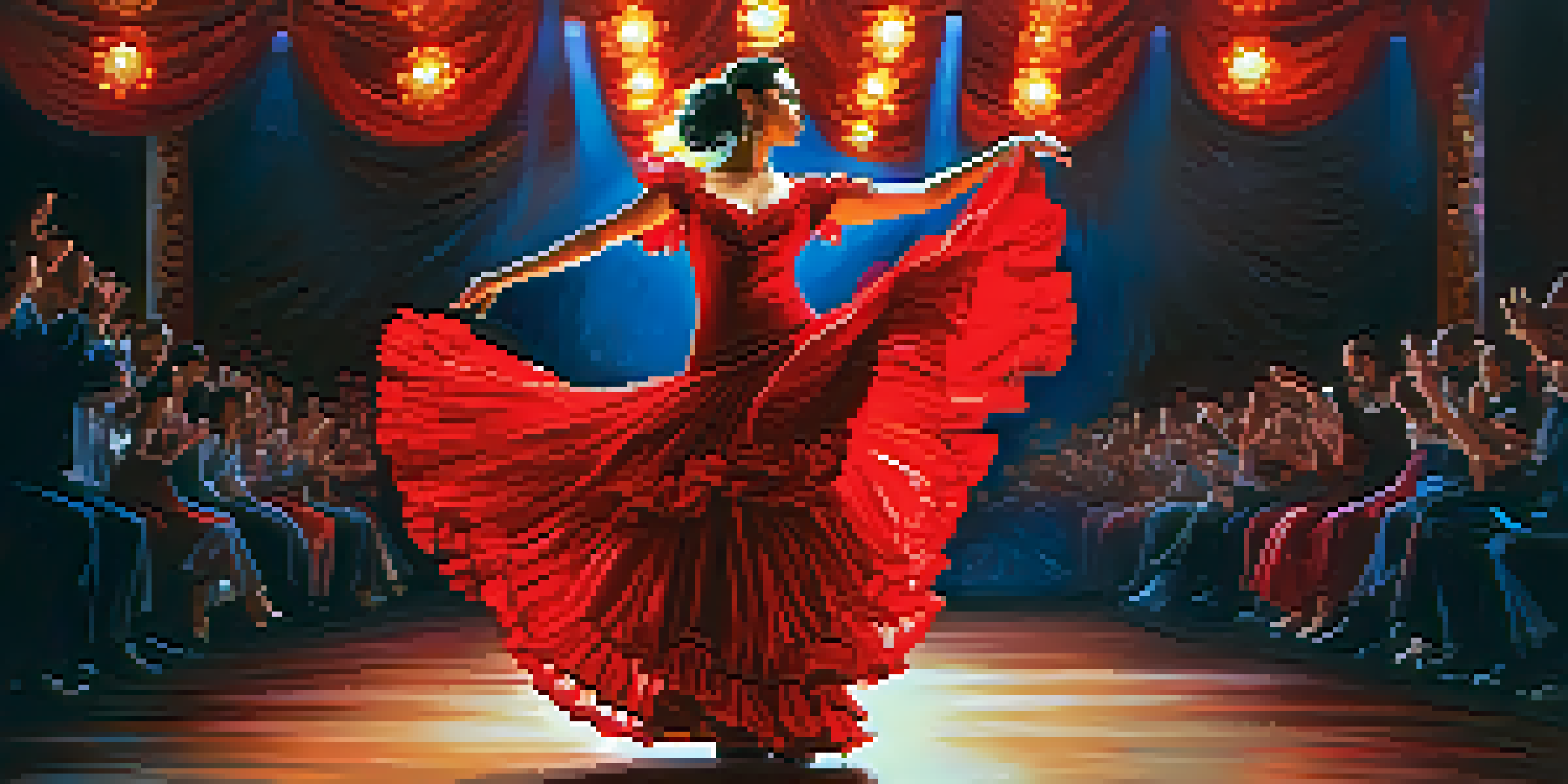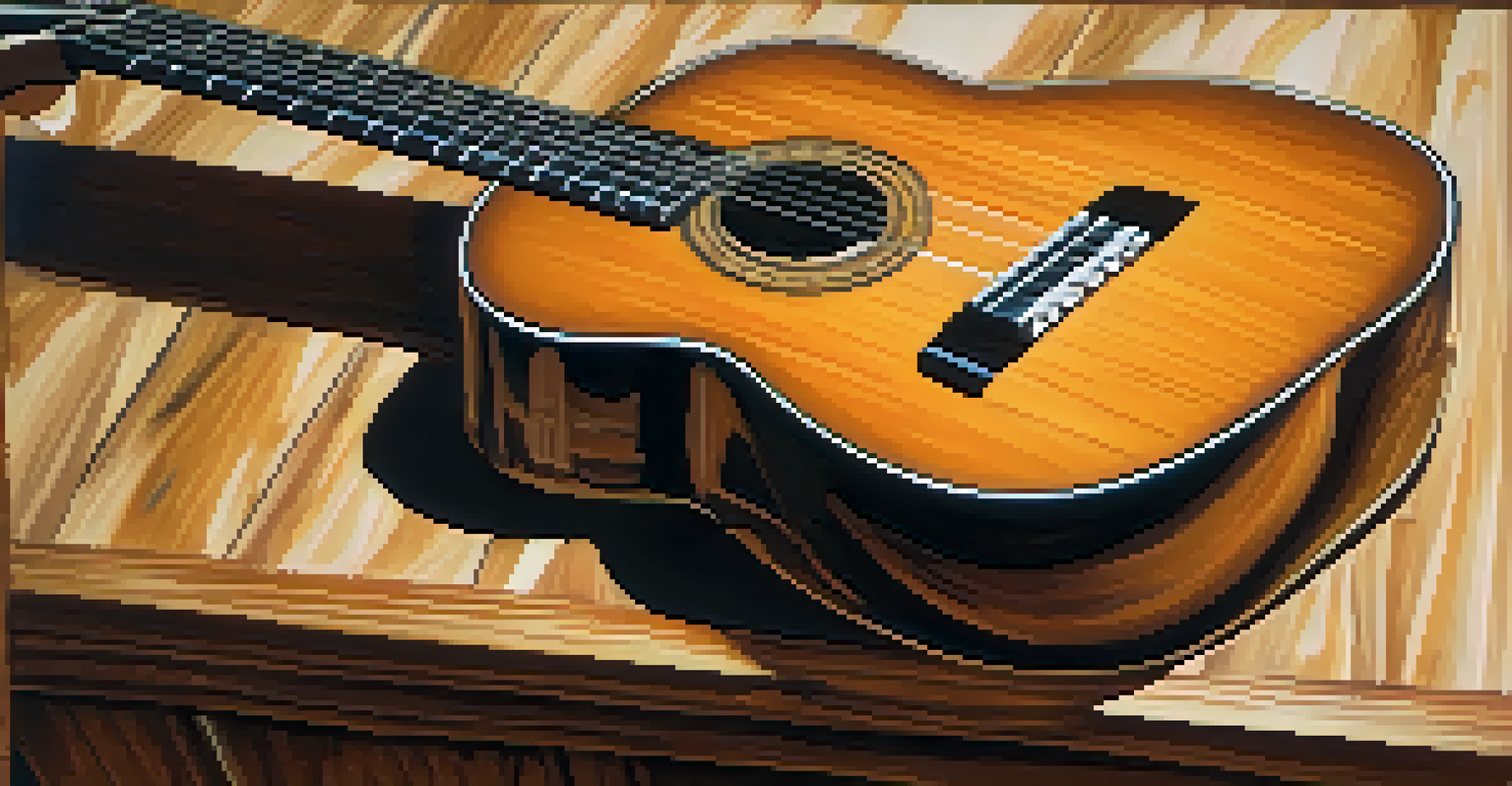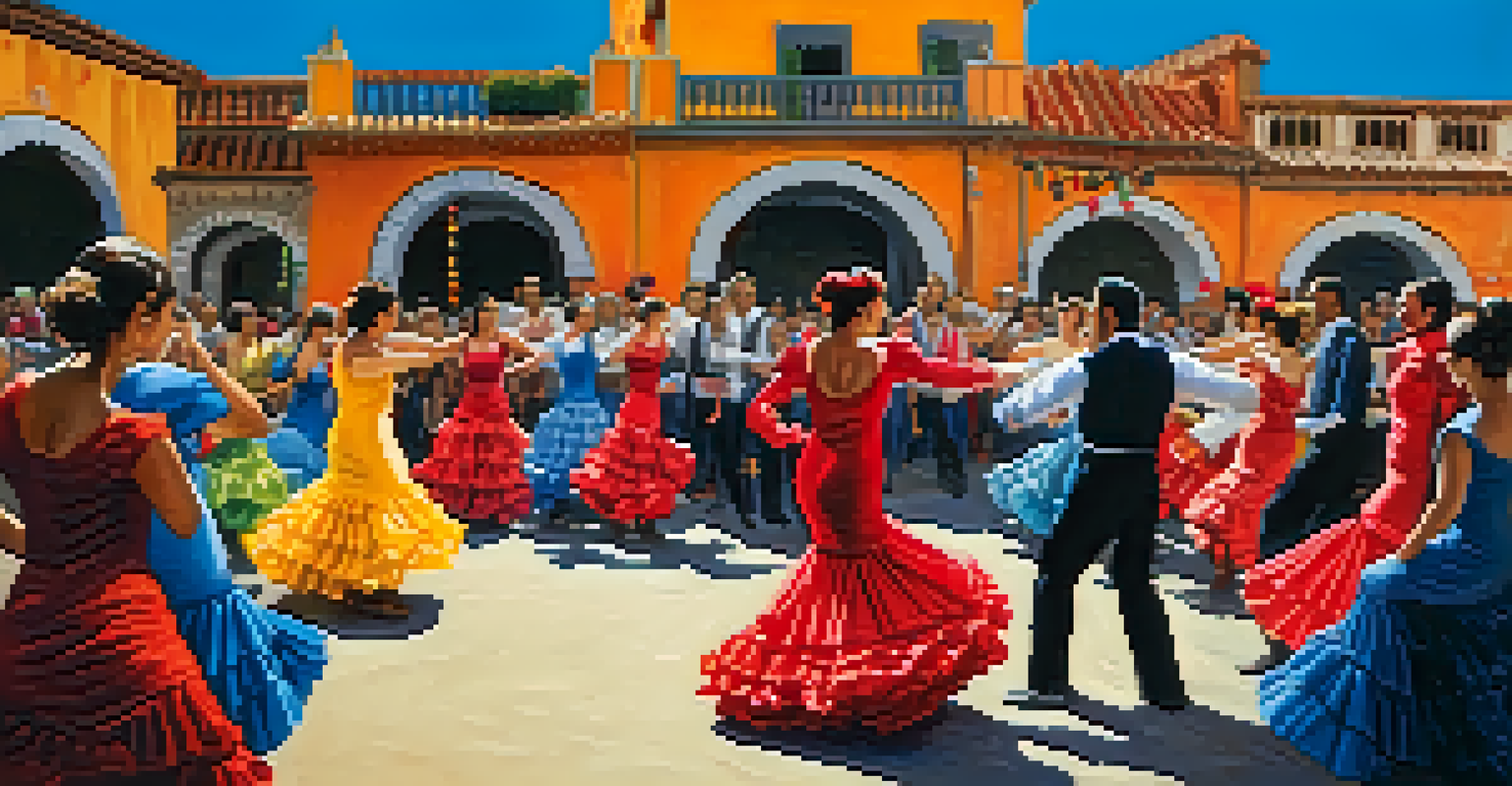Flamenco: A Historical Dance Form with Contemporary Appeal

The Origins of Flamenco: A Cultural Melting Pot
Flamenco traces its roots back to the Andalusian region of Spain, blending influences from various cultures, including Gypsy, Moorish, and Jewish traditions. This rich tapestry of influences created a unique art form that encompasses music, dance, and song. Initially, Flamenco was a means of expression for marginalized communities, often conveying deep emotions and stories of hardship and passion.
Flamenco is a way of life, a way of feeling, a way of expressing oneself.
The dance itself evolved over centuries, with its earliest forms often performed in informal gatherings rather than formal stages. This grassroots origin is part of what gives Flamenco its raw and authentic appeal. It isn't just a dance; it's a powerful storytelling medium that allows performers to express their innermost feelings.
As Flamenco began to gain popularity beyond its local roots, it started to incorporate more structured elements, allowing it to transition into the theatrical performances we see today. The evolution of Flamenco reflects the adaptability of culture and the human experience, making it relatable across generations.
Flamenco's Musical Components: A Symphony of Sounds
At the heart of Flamenco is its distinctive music, characterized by intricate guitar work, soulful singing, and rhythmic clapping. Each element plays a vital role in creating the intense atmosphere that Flamenco is renowned for. The guitar, often seen as the backbone of the performance, provides the framework for dancers to express themselves.

Singers, known as 'cantaores,' convey the emotional depth of the dance through their powerful voices, often drawing on personal experiences and traditional themes. The interplay between the singer and the dancer is a mesmerizing dance of its own, where each responds to the other’s energy and rhythm. This connection adds layers of meaning to the performance.
Flamenco: A Cultural Fusion
Flamenco is a unique art form from Spain that merges influences from Gypsy, Moorish, and Jewish cultures, reflecting a rich history of emotional storytelling.
Additionally, handclaps (palmas) and foot stomping (zapateado) contribute to the music's complexity, creating a percussive backdrop that enhances the visual experience. Together, these musical components form a cohesive whole, making Flamenco not just a dance but a full-bodied artistic expression.
The Dance of Flamenco: Techniques and Styles
Flamenco dance is a physical manifestation of passion and emotion, often characterized by its intense footwork, expressive arm movements, and dramatic poses. Dancers use their bodies to narrate stories, drawing the audience into their world with each step. The footwork, in particular, is a skillful blend of strength and grace, requiring years of practice to master.
The beauty of Flamenco lies in its ability to evolve while remaining true to its roots.
There are several styles, or 'palos,' of Flamenco, each with its own rhythm, mood, and technique. For example, 'soleá' is a slower, more introspective style, while 'alegrías' is upbeat and lively. This diversity allows dancers to choose styles that resonate with their personal expression, making every performance unique.
Understanding the techniques behind Flamenco allows viewers to appreciate the artistry involved in each movement. From the intricate turns to the sharp, precise footwork, every element of the dance is intentional, designed to evoke emotion and storytelling in a visceral way.
Flamenco's Role in Spanish Culture and Identity
Flamenco is more than just a dance; it is a significant part of Spain's cultural identity. It reflects the country's historical struggles, triumphs, and diverse cultural influences. As a result, Flamenco often serves as a symbol of national pride, celebrated in festivals and cultural events throughout Spain.
The Spanish government has recognized the importance of Flamenco by declaring it an Intangible Cultural Heritage of Humanity. This acknowledgment has helped preserve the tradition while also promoting its global appreciation. Flamenco schools and academies have sprung up worldwide, spreading its influence beyond Spanish borders.
Flamenco's Evolving Identity
Contemporary Flamenco showcases a blend of traditional styles with modern genres, ensuring its relevance and appeal to new audiences.
In contemporary Spain, Flamenco continues to evolve, blending with other styles and genres, which keeps it relevant for younger generations. This fusion of traditional and modern influences ensures that Flamenco remains a vibrant and dynamic form of cultural expression.
Contemporary Flamenco: A Fusion of Old and New
In recent years, Flamenco has seen a resurgence in popularity, thanks in part to innovative artists who are pushing the boundaries of the traditional form. These contemporary performers blend Flamenco with other genres such as pop, jazz, and even hip-hop, attracting new audiences and revitalizing interest in the dance. This fusion not only showcases the versatility of Flamenco but also highlights its relevance in today's music scene.
Shows like 'Flamenco Fusion' have gained traction, emphasizing creativity and collaboration among artists from different backgrounds. By incorporating diverse influences, these performances challenge the notion of Flamenco as a static tradition, illustrating its capacity for growth and adaptation. This evolution allows Flamenco to remain a living art form, reflecting the changing world around it.
Moreover, the rise of social media has played a pivotal role in promoting contemporary Flamenco. Platforms like Instagram and TikTok allow dancers to share their performances globally, reaching audiences who may have never encountered Flamenco otherwise. This accessibility opens the door for a new generation to appreciate and engage with this vibrant dance form.
Learning Flamenco: Classes and Resources Available
For those interested in diving into Flamenco, numerous classes and resources are available both in-person and online. Many dance studios offer beginner classes, where students can learn the fundamental techniques and rhythms at their own pace. These classes help demystify Flamenco, making it approachable for anyone willing to give it a try.
Online platforms also provide a wealth of tutorials and workshops led by experienced dancers. These resources cater to various skill levels, allowing learners to practice from the comfort of their homes. Engaging with online communities can also enhance the learning experience, as dancers share tips and encouragement.
Learning Flamenco Today
With numerous classes and online resources available, anyone can explore Flamenco, enhancing their dance skills and cultural appreciation.
Whether you want to take a few classes for fun or delve deeper into the art form, the options are plentiful. The journey of learning Flamenco not only enhances your dance skills but also deepens your appreciation for this historical and passionate dance.
The Future of Flamenco: Preserving Tradition and Innovation
As Flamenco continues to evolve, the challenge remains to preserve its rich traditions while embracing innovation. Artists and educators are finding ways to honor the historical significance of Flamenco while also encouraging experimentation and new interpretations. This balance is crucial for keeping the art form alive and relevant in a rapidly changing world.
Many festivals and events are dedicated to celebrating Flamenco, providing a platform for both traditional and contemporary performances. These gatherings foster dialogue among artists and audiences, creating a sense of community that strengthens the Flamenco culture. They also encourage the next generation of performers to explore their creativity within the framework of tradition.

Ultimately, the future of Flamenco lies in its ability to adapt while staying true to its roots. As long as there are passionate dancers and musicians willing to share their stories, Flamenco will continue to thrive, captivating hearts and minds around the globe.